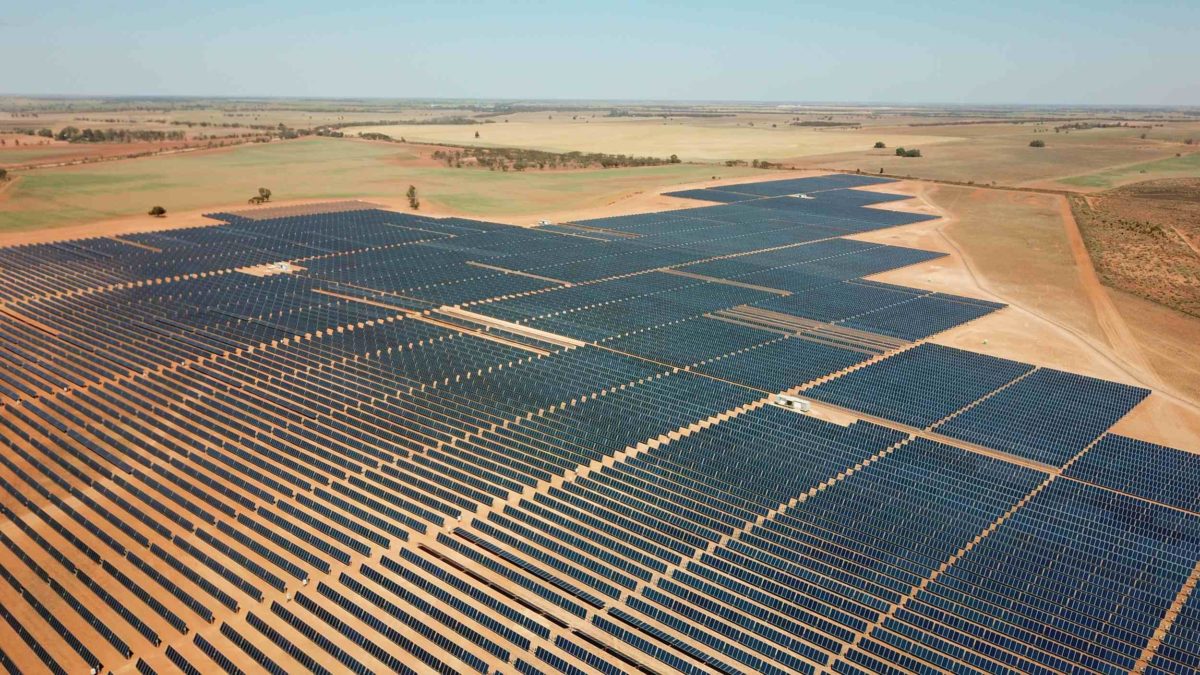Victoria has released new guidelines that look to inform project developers in terms of PV power plant design and, importantly, location. The Solar Energy Facilities – Design and Development Guideline warns that the clustering of solar energy in locations amenable to NEM connection can be problematic. While it is admitted that “the clustering of solar or other renewable energy facilities in an area can result in efficiencies by sharing existing, or augmenting, electricity network infrastructure,” too many facilities in the one are can have adverse effects upon agricultural land, as well as landscape aesthetics and biodiversity.
The guidelines point to the advantages of collocating PV projects with agricultural land uses. The approach has seen success in a number of PV markets and in Australia is being advanced by developers such as Volt Farming. Solar farms can coexist with smaller livestock, such as sheep, and farmers are beginning to hybridise their land for both livestock grazing and solar energy generation.
New guidelines direct that it is advantageous that large-scale solar facilities be located on land that doesn’t require excessive earthworks or topographical alterations, avoids impacting native vegetation and biodiversity, and that any impacts are offset. It also advises that projects be established close to the NEM to minimise the need for new infrastructure, and yet some distance from built up areas.
Network access
The issue of network accessibility has stalled or delayed a number of solar projects in Australia in recent years. From the 60 MW Kennedy Energy Park and 65 MW Adani Renewables Rugby Run Solar Farm in Queensland to the 34 MW Cohuna Solar Farm in Victoria have all been impacted by significant transmission related delays that have threatened to blow out costs.
According to a recent survey of industry executives released by the Clean Energy Council (CEC) in December 2018, grid connection and network access for new solar and storage progress was a top concern.
Chris Wilson, Co-founder and Managing Director of solar farm developers Terrain Solar told pv magazine Australia back in March: “…the biggest challenge coning through is very much grid connection. It used to be that offtake and PPAs were the number one constraint in the development space, but now it’s very much shifting into understanding grid connection and risks and the risk of delays and the costs associated with grid connection.”
The new guidelines will come into effect when, and not until, the Victoria Planning Provisions have been amended. More information on the Victorian Government’s new guidelines can be found here.
This content is protected by copyright and may not be reused. If you want to cooperate with us and would like to reuse some of our content, please contact: editors@pv-magazine.com.









Awwwwww, put a system that is less than 1MW on private property and use energy storage to off set generation and demand throughout a 24 hour period. Having a solar PV plant built without a PPA and grid power connection is insane. A long term PPA and a power corridor connection next to the project draws investors. No, PPA, no power connection, no investment.